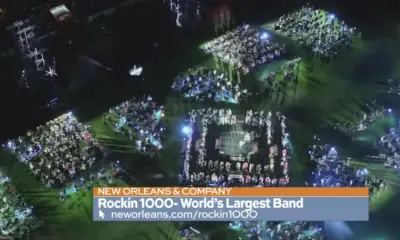Science
UC Berkeley Project Aims to Locate Missing WWII Soldiers

A UC Berkeley archaeologist is pioneering a novel approach to expedite the recovery of service members who went missing during World War II. Jun Sunseri is developing a comprehensive resource library to assist archaeologists worldwide in locating the remains of approximately 80,000 U.S. servicemembers still unaccounted for, according to the Defense POW/MIA Accounting Agency (DPAA).
Sunseri’s interest in this project is deeply personal. He recalls tales from his grandfather, Stanley, who served as a mechanic in the U.S. Army Air Forces in North Africa and Italy. Stanley often spoke of his service, but also reflected on the loss of friends who never returned. This background inspired Sunseri to combine his expertise in engineering and archaeology to address the pressing issue of recovering fallen servicemembers.
The DPAA estimates that around 38,000 of the missing remains are recoverable. Each year, teams made up of private archaeology consultants and university researchers excavate sites believed to be crash locations for military aircraft. These missions can be time-sensitive, often lasting only a month, during which teams may encounter various obstacles, including unexploded ordnance.
Sunseri explains that identifying wreckage at a crash site can be a daunting task. Distinguishing between different metal fragments requires specialized knowledge that many volunteers lack. To tackle this challenge, Sunseri is leveraging his background as a zooarchaeologist to create a comparative collection for aircraft components, similar to how animal bones are analyzed in archaeology.
In 2022, Sunseri visited multiple air museums, including the National World War II Museum, to gather insights on what parts might survive decades of exposure. This research led to the inception of the Missing American Aircrews Project. He aims to build a toolkit that integrates digital resources, including a library of 2D and 3D images and videos, to support recovery teams in the field.
The project’s first phase focuses on crowdsourcing high-quality images and videos of military aircraft, uniforms, and life support equipment. Sunseri encourages visitors of military museums to contribute photos, as well as collectors of wartime artifacts. This collaborative effort will enhance the understanding of specific components, aiding archaeology teams in identifying crucial parts during excavations.
In the second phase, Sunseri plans to engage military history enthusiasts and veterans globally. Their contributions will help categorize the crowdsourced images and refine details about specific aircraft and missions, which will be essential for recovery teams. This effort aims to compile extensive files sorted by airframe, period, and duty stations, making them readily accessible offline in the field.
The final stage will allow recovery teams to quickly access comprehensive 3D models and detailed information about aircraft components during missions. For instance, a diver investigating a suspected crash site in the Pacific Ocean could utilize these resources to navigate wreckage more effectively.
Beyond the technical aspects, Sunseri sees this initiative as a means of community engagement and healing. He believes the involvement of citizen scientists in recovery efforts can bridge divides within society, fostering a shared purpose and understanding among participants. Sunseri stated, “It’s about giving these families closure and finally bringing these service members home.”
Students from Sunseri’s lab have already begun working on the project, participating in field recovery operations and collaborating with citizen scientists. Despite limited funding, the team is dedicated to building workflows and training volunteers for various aspects of the initiative.
Sunseri has completed training with the DPAA and aims to establish a long-term partnership that could see the comparative collection utilized by recovery teams worldwide. He is optimistic that this project will enhance the success rates of recovery missions.
For more information, visit the Missing American Aircrews Project website or contact Jun Sunseri at [email protected]
-

 Technology5 months ago
Technology5 months agoDiscover the Top 10 Calorie Counting Apps of 2025
-

 Health2 months ago
Health2 months agoBella Hadid Shares Health Update After Treatment for Lyme Disease
-

 Health3 months ago
Health3 months agoErin Bates Shares Recovery Update Following Sepsis Complications
-

 Technology4 months ago
Technology4 months agoDiscover How to Reverse Image Search Using ChatGPT Effortlessly
-

 Technology1 month ago
Technology1 month agoDiscover 2025’s Top GPUs for Exceptional 4K Gaming Performance
-

 Technology2 months ago
Technology2 months agoElectric Moto Influencer Surronster Arrested in Tijuana
-

 Technology5 months ago
Technology5 months agoMeta Initiates $60B AI Data Center Expansion, Starting in Ohio
-

 Technology5 months ago
Technology5 months agoRecovering a Suspended TikTok Account: A Step-by-Step Guide
-

 Health4 months ago
Health4 months agoTested: Rab Firewall Mountain Jacket Survives Harsh Conditions
-

 Lifestyle5 months ago
Lifestyle5 months agoBelton Family Reunites After Daughter Survives Hill Country Floods
-

 Technology4 months ago
Technology4 months agoHarmonic Launches AI Chatbot App to Transform Mathematical Reasoning
-

 Technology3 months ago
Technology3 months agoUncovering the Top Five Most Challenging Motorcycles to Ride





















